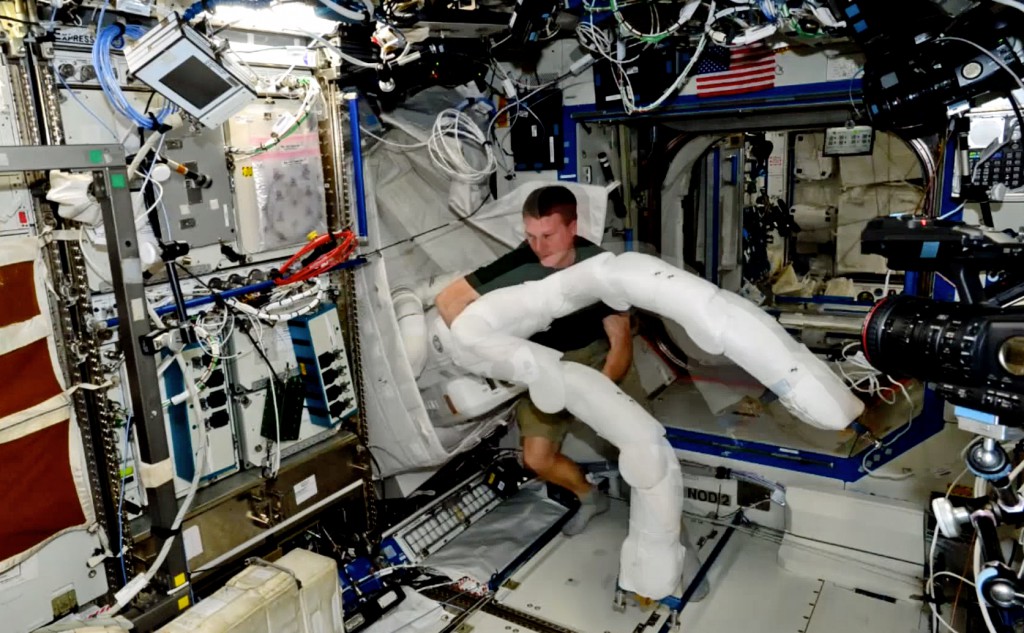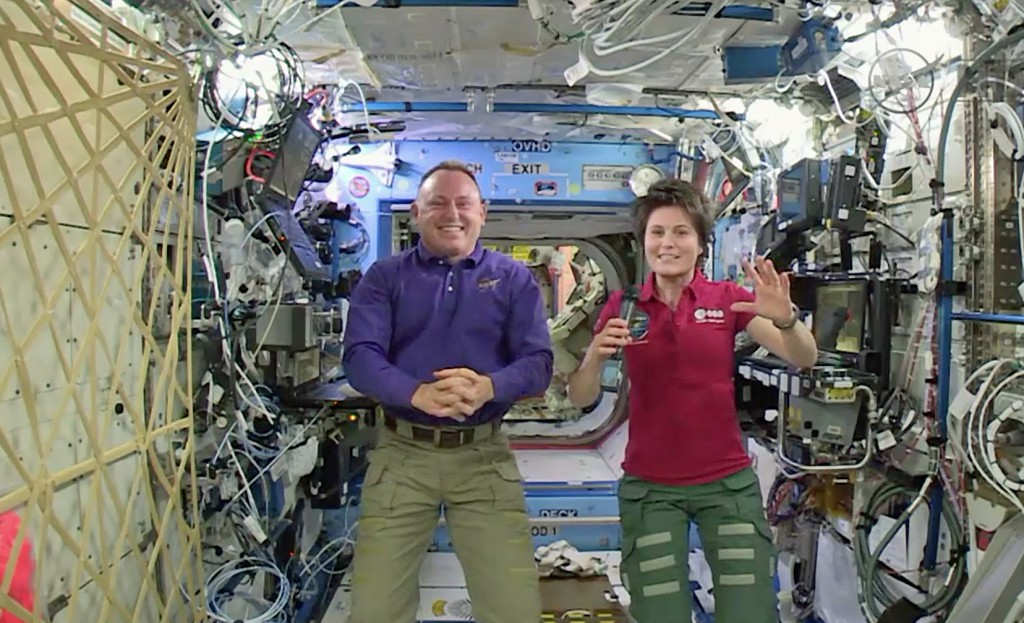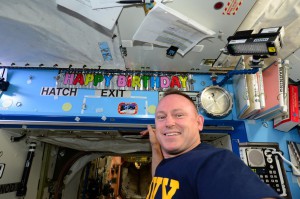
The Expedition 42 crew orbiting Earth on the International Space Station gets the opportunity to celebrate New Year’s Eve a whopping 16 times as it circles the globe at 17,500 miles an hour.
Commander Barry “Butch” Wilmore and his crew, which includes NASA’s Terry Virts, Russian cosmonauts Elena Serova, Alexander Samoukutyaev and Anton Shkaplerov, and European Space Agency astronaut Samantha Cristoforetti, say they plan to celebrate with fruit juice toasts. The year 2015 starts officially for the station crew at 7 p.m. EST Jan. 31, which is midnight by the Universal Time Clock (UTC), also known as Greenwich Mean Time (GMT), in London. The crew is scheduled to be in its sleep shift, but may elect to stay up late since it has a day off planned for New Year’s Day.
Watch the Happy New Year message
The crew spent New Year’s Eve day working on a variety of experiments, ranging from those directed at better understanding changes that occur in the human eye during long-duration spaceflights, and with Earth observations aimed at helping with disaster aid on the Earth’s surface.
Read more about the Ocular Health experiment
Read more about the ISS SERVIR Environmental Research and Visualization System (ISERV)
The crew also continued preparations for the arrival of the next cargo supply ship, the commercial resupply mission of SpaceX-5 and the Dragon spacecraft. Launch of Dragon on a Space-X Falcon 9 booster is planned for 6:20 a.m. EST Tuesday, Jan. 6, 2015. NASA Television launch coverage begins at 5 a.m.
Dragon will rendezvous with the space station Thursday, Jan. 8, and Wilmore will use the 58-foot robotic arm to grab the Dragon by its tail and berth if to the station. Grapple is expected about 6 a.m. NASA Television coverage of the grapple starts at 4:30 a.m. Thursday, and installation coverage will begin at 8:15 a.m. Dragon is loaded with more than 3,700 pounds of scientific experiments, technology demonstrations and supplies, including critical materials to support 256 science and research investigations that will take place on the space station during ISS Expeditions 42 and 43.
A series of briefings outlining Dragon’s mission and the scientific research it will be carrying is planned Monday, Jan. 5.
Read full schedule of SpaceX-5 and ISS Research briefings
Watch Terry Virts’ #SpaceVine of Robonaut:


